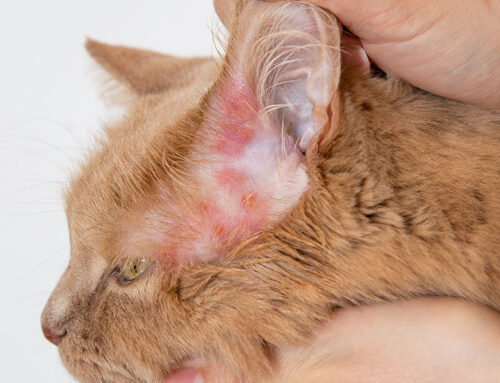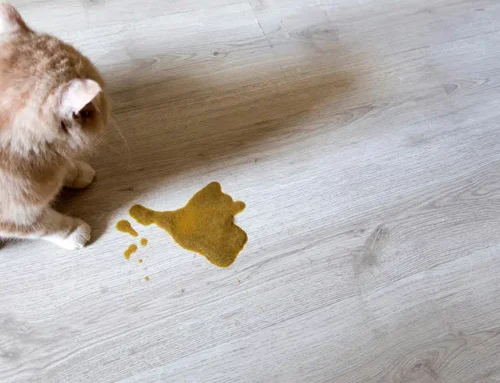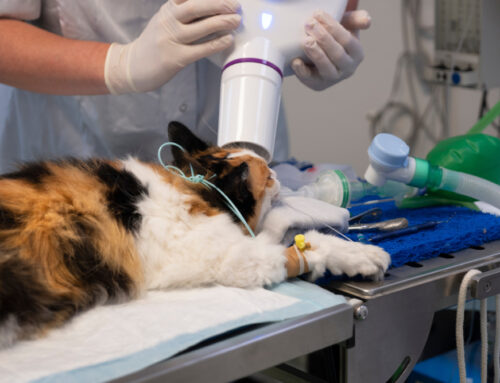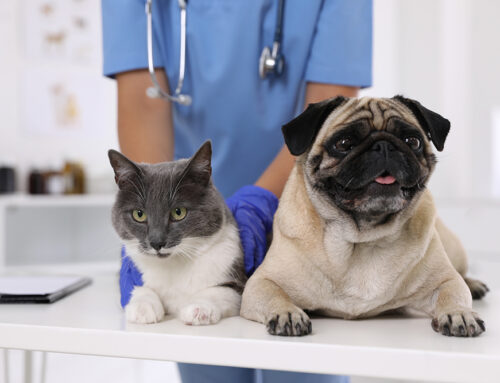The sounds of summer include two types of whining—one is the mosquito that sneaks into your ear, and the other is a child saying, “I’m bored.”
When dangerous heat and humidity keep us indoors, your dog may also be thinking they are bored, as they sigh from their place on the couch—the couch they have been holding down for the past two days. Star of Texas Animal Hospital is ready to get your pup back on their paws with five great summer boredom-busting indoor activities that you and your dog can enjoy.
The importance of play for dogs
Play is an important part of a dog’s life, and contributes to their overall health by engaging both mind and body, expelling excess energy, and producing feel-good hormones such as endorphins and dopamine. Appropriate play can reduce the frequency of unwanted behaviors, and strengthen the pet-owner bond.
You cannot play with your dog the “wrong way”
Dogs are individuals, who all have preferences about their interactions. While a Labrador may love a good thump on the ribs, another dog is mortified by such a gesture. Consider your own dog as you attempt these activities, and make modifications to accommodate your dog’s age, fitness, or personality—and remember, if it isn’t safe, it isn’t fun.
A word about food and pets
Some of these games involve food or treats. If your dog has food sensitivities or allergies, check with your veterinarian before trying anything new. We recommend using your dog’s meal portions for some of the games, to reduce total calories. We also recommend Cheerios, carrots, green beans, and low-calorie training treats.
#1: Sniffing and snuffling pets
The unfathomable power of the canine nose, with more than 300 million scent receptors, is estimated at 10 to 100,000 times more acute than a human’s. This snuffle game will harness only a fragment of canine capability.
A snuffle mat is made of knotted and fringed fleece, tied closely together to form a tight weave. Simply sprinkle your dog’s dry food on the mat and shake to distribute. Placing the food by hand will increase the challenge. A snuffle mat is a great way to slow down your pet’s eating, to provide a happy distraction at the veterinarian’s office, and is an impressively fatiguing exercise. The mental processing of scent-related activities is incredibly satisfying for dogs—often followed by a nap.
#2: Problem-solving pets
Gather some paper towel or toilet paper rolls, packing paper, and a cardboard box. Destruction boxes are an exciting and safe activity for dogs who enjoy ripping and shredding paper. Be prepared for lots of entertainment as your pet figures out what to do—and plenty of soggy cardboard and paper to clean up.
#3: My sights are set—pet chasing games
Some pets are difficult to motivate for food, but activating their prey drive will make them come alive. An indoor “Chase me” game can make you feel like you are a kid again. Simply sprinkle a few treats on the ground—or in a snuffle mat—and leave the room. Your dog may see you go and give chase, and that is fine. Celebrate when you are “caught” with a toy, petting, or a treat, and repeat. If your dog loses track of you, call them from your hiding place until you are discovered. You will know your dog has ended the game when they do not come looking for you.
#4: Chef canine
For the culinary canine, trying new, healthy food options of various flavors, shapes, and textures is an enjoyable enrichment activity. Use your pet’s known preferences to help you branch out (e.g., if your pet likes blueberries, try raspberries, or if they enjoy apples, try a slice of peach or kiwi). Try the following:
- Sweet potato chips are an easy to make, single ingredient snack that is a big hit with dogs. Sliced thin and dehydrated in the oven, you’ll find them hard to resist, too.
- Get creative with how you serve your dog’s familiar foods—try freezing fruits like watermelon for a fresh surprise.
- Feel like baking? Pinterest is a great resource for easy, free dog treat recipes.
Always check the ASPCA Food Toxin List before offering anything to your pet.
#5: “More petting please” pet massage

Touch is a large source of positive “input” for a dog’s body—touch activates sense receptors in the skin to send messages to the brain via the spinal cord. Massage also stimulates blood flow and promotes the removal of lymphatic fluid from tissues, reducing swelling and inflammation.
- Perform a massage in a quiet, calm space where you can encourage your dog to relax beside you.
- Begin with gentle petting strokes down your dog’s back, eventually incorporating the head, and moving with a light pressing motion toward the tail.
- As your dog relaxes, begin increasing the pressure lightly, always watching for signs of discomfort, and never forcing them to stay.
- Finish the session with “angel wing”motions, which are gentle sweeping motions of both hands on either side of the spine, working down toward the tail.
- Some dogs enjoy a head massage, so you may want to try that, as well.
Star of Texas Veterinary Hospital believes mental enrichment is an important component of total dog health. Do you have questions about getting your dog active and engaged? Contact us and check out our 360° care program for any pet behavioral needs.







